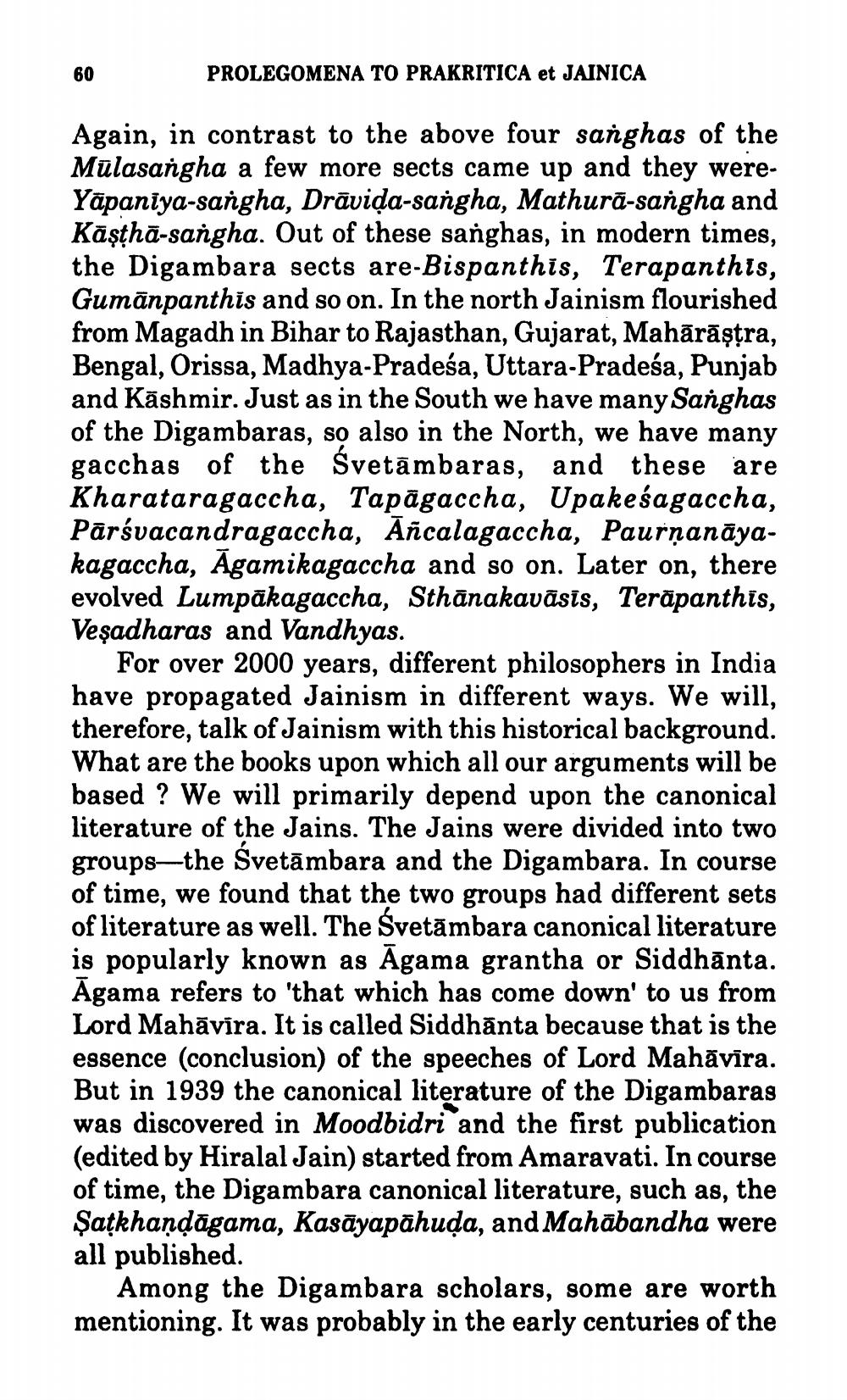________________
60
PROLEGOMENA TO PRAKRITICA et JAINICA
Again, in contrast to the above four sanghas of the Mūlasangha a few more sects came up and they wereYāpaniya-sangha, Drāvida-sangha, Mathurā-sangha and Kāşthā-sangha. Out of these sanghas, in modern times, the Digambara sects are-Bispanthis, Terapanthis, Gumānpanthis and so on. In the north Jainism flourished from Magadh in Bihar to Rajasthan, Gujarat, Mahārāştra, Bengal, Orissa, Madhya-Pradeśa, Uttara-Pradeśa, Punjab and Käshmir. Just as in the South we have many Sanghas of the Digambaras, so also in the North, we have many gacchas of the Svetāmbaras, and these are Kharataragaccha, Tapāgaccha, Upakeśagaccha, Pārsvacandragaccha, Añcalagaccha, Paurņanāyakagaccha, Agamikagaccha and so on. Later on, there evolved Lumpākagaccha, Sthānakavāsis, Terāpanthis, Veşadharas and Vandhyas.
For over 2000 years, different philosophers in India have propagated Jainism in different ways. We will, therefore, talk of Jainism with this historical background. What are the books upon which all our arguments will be based ? We will primarily depend upon the canonical literature of the Jains. The Jains were divided into two groups—the Svetāmbara and the Digambara. In course of time, we found that the two groups had different sets of literature as well. The Svetāmbara canonical literature is popularly known as Agama grantha or Siddhānta. Āgama refers to 'that which has come down' to us from Lord Mahāvīra. It is called Siddhānta because that is the essence (conclusion) of the speeches of Lord Mahāvīra. But in 1939 the canonical literature of the Digambaras was discovered in Moodbidri and the first publication (edited by Hiralal Jain) started from Amaravati. In course of time, the Digambara canonical literature, such as, the Şațkhaņdāgama, Kasāyapāhuda, and Mahābandha were all published.
Among the Digambara scholars, some are worth mentioning. It was probably in the early centuries of the




